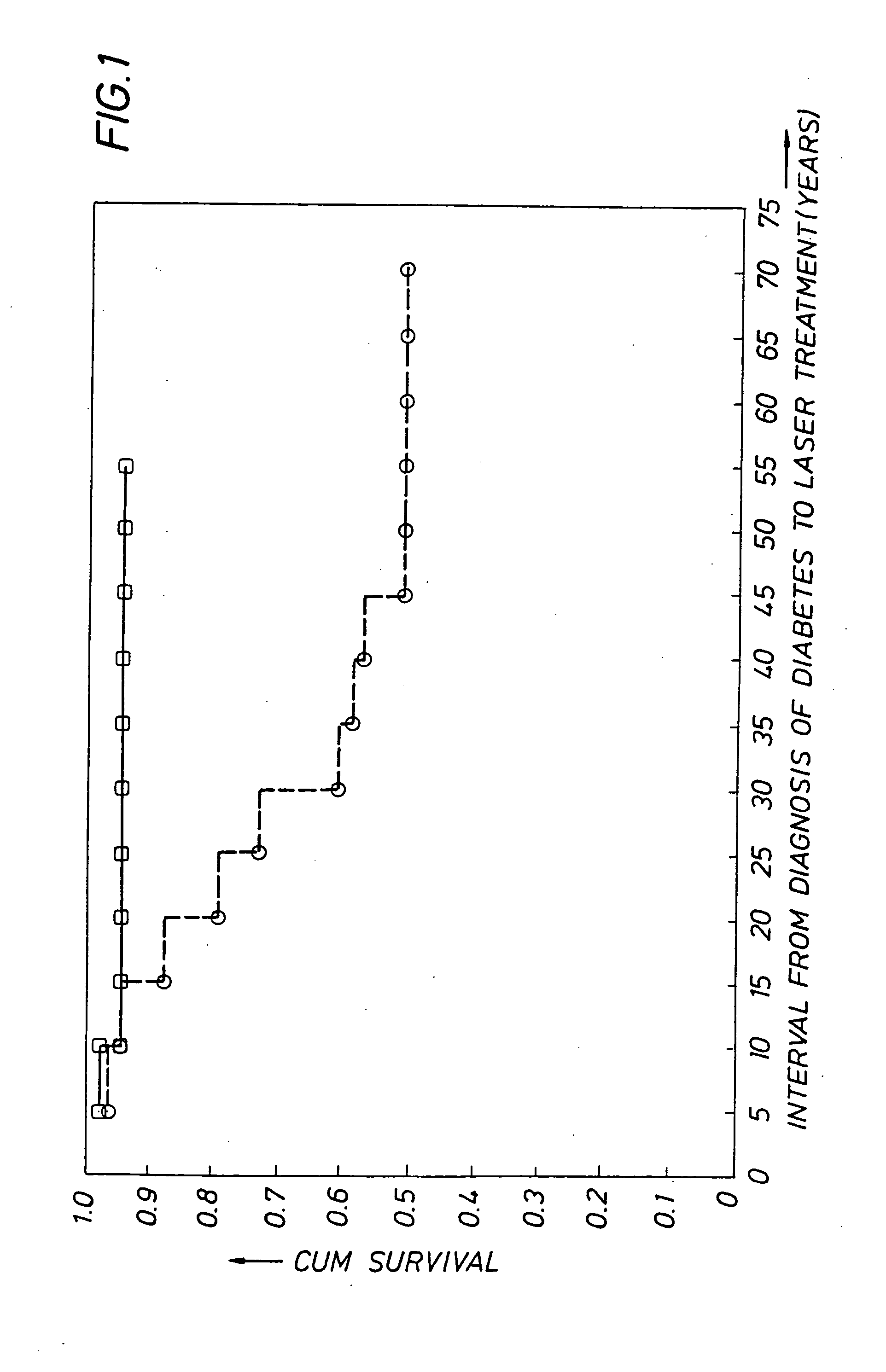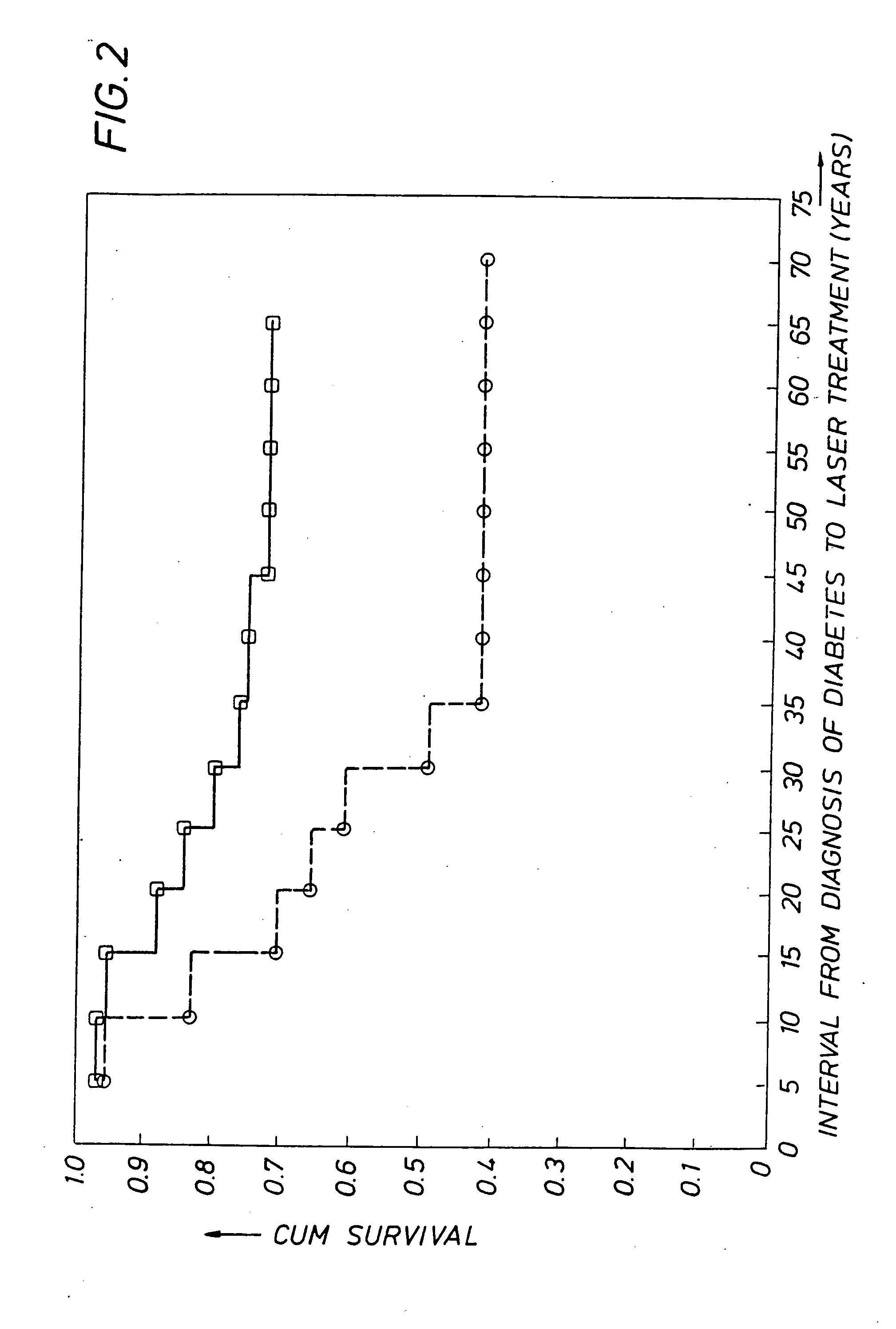Detecting genetic predisposition to sight-threatening diabetic retinopathy
- Summary
- Abstract
- Description
- Claims
- Application Information
AI Technical Summary
Benefits of technology
Problems solved by technology
Method used
Image
Examples
Embodiment Construction
[0085] General Methods
[0086] Reactions and manipulations involving nucleic acid techniques, unless stated otherwise, were performed as generally described in Sambrook et al., 1989, Molecular Cloning: A Laboratory Manual, Cold Spring Harbor Laboratory Press; polymerase chain reaction (PCR) was carried out generally as described in PCR Protocols: A Guide To Methods And Applications, Academic Press; San Diego, Calif. (1990) and methodology as generally described in U.S. Pat. Nos. 4,666,828; 4,683,202; 4,801,531; 5,192,659 and 5,272,057 and McDowell et al., 1995, these cited references incorporated herein by reference.
[0087] Enzymes used in PCR were from GIBCO BRL, thermocyclers were either Perkin-Elmer or Biometra. Restriction enzymes NcoI and TaqI were from Promega (US). Restriction enzymes Aval and Bsu36I were from NEB (US). Other reagents were from Gibco (UK).
[0088] Statistical Analysis
[0089] X.sup.2 analysis was used. Where required the analyses were performed with the SAS statisti...
PUM
 Login to View More
Login to View More Abstract
Description
Claims
Application Information
 Login to View More
Login to View More - R&D
- Intellectual Property
- Life Sciences
- Materials
- Tech Scout
- Unparalleled Data Quality
- Higher Quality Content
- 60% Fewer Hallucinations
Browse by: Latest US Patents, China's latest patents, Technical Efficacy Thesaurus, Application Domain, Technology Topic, Popular Technical Reports.
© 2025 PatSnap. All rights reserved.Legal|Privacy policy|Modern Slavery Act Transparency Statement|Sitemap|About US| Contact US: help@patsnap.com


